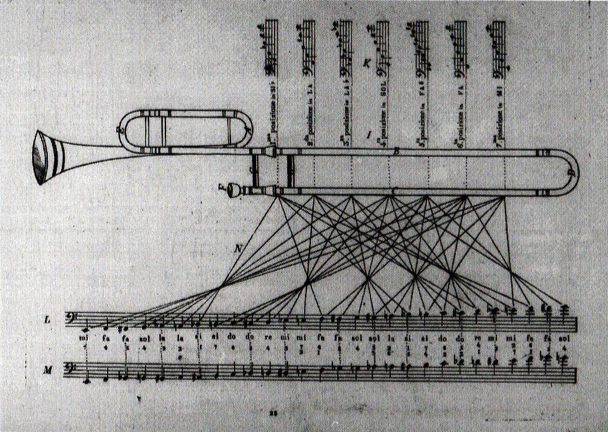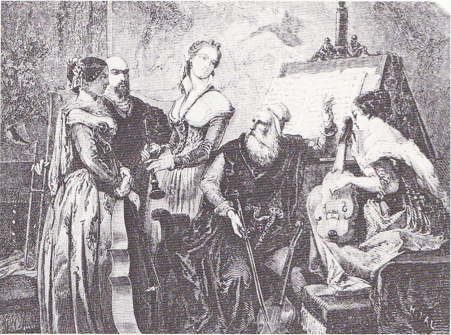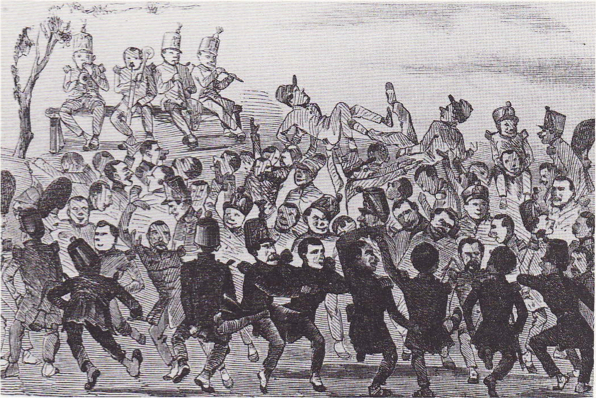I have recently added three more images to the Trombone History Timeline that feature rear-facing trombones. These trombones have sometimes been called over-the-shoulder instruments, a term that works for other brass instruments but is somewhat lacking for trombones: aren’t all standard trombones, in fact, over-the-shoulder (with the bend of the bell section extending over the shoulder)? Thus I prefer the term rear-facing trombone. At any rate, I have posted before about these interesting instruments (see the rear-facing trombone tag). Below are the most recent additions, all three from France. It is surprising to see how common the instruments actually are in trombone iconography, especially in the 19th century. For an extant example of such an instrument held in the Boston Museum of Fine Arts, see here.
c. 1795—France: Trombonist André Braun publishes Gamme et Méthode pour let Trombones, the first complete modern method book written specifically for trombone. It also contains the first description of a tenor trombone in B-flat with seven chromatic positions (see below image; public domain). It specifically states that the alto trombone is in E-flat, the tenor and bass in B-flat. An influential method book–it informs several later methods, including Fröhlich and Nemetz–the method book also provides an alto trombone position chart clearly showing an instrument in E-flat (see Alto Trombone History Timeline). Editions of the method are subsequently published in German and Italian (Weiner, Braun; Weiner, Braun Revisited; Dudgeon 194).
1847—Paris, France: An article in the periodical L’Illustration titled “Le Pupitre de Palestrina” (“The Desk of Palestrina”) is accompanied by an image by Henri Valentin that includes a rear-facing trombone in what appears to be an attempt at a historical representation of a Palestrina-era performance (see far left of below image; public domain) (L’Illustration, vol. 9, May 1, 1847, p. 137).
1853—Paris, France: The illustrated newspaper L’Illustration publishes a graphic, “La danse aux camps,” depicting a military celebration with a four-man band in the upper-left that includes what appears to be a rear-facing trombone (see below image; public domain) (L’Illustration, vol. 22, July 23, 1853, p. 64).